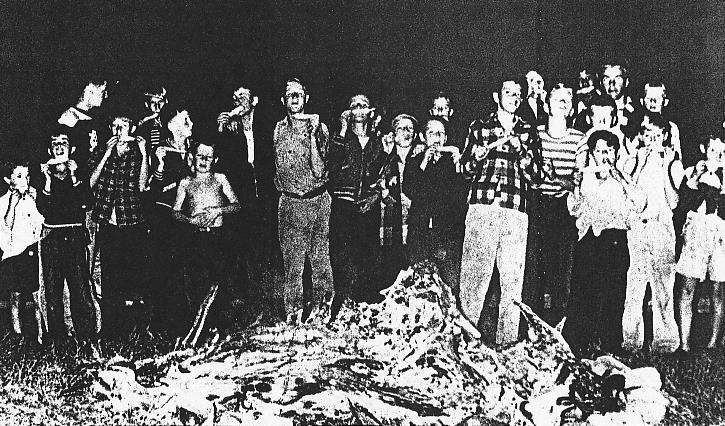History of Camp Mockingee

First Rotary Club Camp - 1949 - At Mockingigh Lake (photo donated by Carl Carmichael) This is the earliest Camp Mockingee photo we have found and so far we only have a photocopy. In the photo left to right: Jeff Boudreau, Earl Smeltzer, Skip Hatt, Perry Whynott, Weldon Brown, John Fogarty, Charlie Murdock, Doug Fredericks, Carl Carmichael, Normie Fredericks, Garth Leighton, George Wilkins, Freddy Wilkins, Bobby Spicer, Donnie Marshall, Jimmy Sawler, Donnie Blenkhorn, Cecil Paris, Sammy MacDonald, Gerald Bonang, Brudsie Blenkhorn, Bobby McLeod, Timmy Burbidge.

Mockingee Youth Camp around 1951. The following list of names came with the photo. Back rows - left to right: Harold Mitten?, Jim Macdonald, Colin Taylor, Clary Wood, Ted Harris?, Doug Morton, Judy Smith, Tracy Bond, --------, Ira Lohnes, --------, Swen Ball, Dan Murray, Ralph Parsons, Ralph Loomer, Ralph Holmes, Lefty MacCoy, George Bartlett, Gordon Loomer, Vic Aylward, Ezra Parsons, Neil Dow? ------, Mike King, George Cole, Tom Aylward, Al MacKenzie, Owen Keddy? Ben Alexander, --------, Jim Blakney, Harold Anslow, Charlie Manning, Foster Gill? Ralph Dimock, Colin Stephens? Frank Lawrence.
In 1996 the first phase of the Camp's transformation into an all-season facility began. A heated kitchen and dining hall were constructed on a full basement. The old kitchen was moved to a new location to await further development.
Thanks to a generous bequest from the estate of Shirley Woods in 2002, the Camp acquired an additional 35 acres of forest, bringing the size of the total property to 75 acres.
Also in 2002, the Club expanded and transformed the Counsellors Building into a four-season lodge accommodating 24. This building was placed on a full basement and provided with washrooms and showers. It was renamed the Kirk Building, to recognize the work of Rotarian Andy Kirk for the Camp.
Most recently, the old kitchen was completely renovated into a 24-bed heated dormitory, completing the transformation to an all-season facility. In 2007 this building was named Vale House in recognition of the many thousands of volunteer hours provided by Rotarian Ted Vale and his wife Marion. In 2005 Marion was awarded a Paul Harris Fellow in recognition of her dedication to planning, constructing, and finishing buildings and the grounds at the camp.